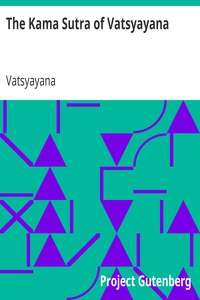# 58

The Kama Sutra of Vatsyayana Vatsyayana - The Kama Sutra of Vatsyayana by Richard Francis Burton is an edition of the ancient Indian text on sexuality and emotional needs. Vatsayana was an ancient Indian philosopher who lived during the second or third century. Although it is often thought of as a sex manual, it is much more, with guides on living well, the nature of love, and finding a partner. Indeed, Vatsyayana says himself: 'This work is not to be used merely as an instrument for satisfying our desires'. Burton did not in fact translate the Kama Sutra - it was translated by the Indian scholar Bhagwan Lal Indraji. It was edited by Burton to suit prevailing British attitudes to sex, but was still banned in England and the United States until 1962. Other criticisms levelled at Burton's translation is that instead of using English words for the sex organs, he uses the words 'lingam' and 'yoni', despite those words not appearing in the original work. This was seen as an attempt to distance them and make them 'other', rather than about English people's sexual organs. He also removes the agency of women, and where in the original, women's words are direct quotes, in the Burton translation, women's words are removed and put into the passive state (i.e., A woman saying 'Stop!' becomes 'She continually utters words expressive of prohibition'). Despite all this, it has been such an influential translation that even modern editions in the Hindi language are re-translations of the Burton version.The Kama Sutra is an ancient Indian Hindu text widely considered to be the standard work on human sexual behavior in Sanskrit literature written by Vaatsyayana. A portion of the work consists of practical advice on sexual intercourse. It is largely in prose, with many inserted anustubh poetry verses. "Kama" which is one of the four goals of Hindu life, means desire including sexual desire the latter being the subject of the textbook, and "sutra" literally means a thread or line that holds things together, and more metaphorically refers to an aphorism (or line, rule, formula), or a collection of such aphorisms in the form of a manual. Contrary to popular perception, especially in the western world, Kama sutra is not exclusively a sex manual; it presents itself as a guide to a virtuous and gracious living that discusses the nature of love, family life and other aspects pertaining to pleasure oriented faculties of human life.

人間には愛の知識が必要である 1000編にもおよぷ古代インドの性愛論『カーマ・シャーストラ』のうち、もっとも古く重要な文献とされているインド3大性典のひとつ『カーマ・スートラ』。「カーマ」とは「愛」のことであり、人生に「愛の研究」の重要性を説いている。人々を魅惑し続け、歴史資料としても価値の高い「愛の教典」を漫画化! ヴァーツヤーヤナ(生没年不詳) バラモン教・ニヤーヤ派の学者。宮廷詩人で『カーマ・スートラ』の編纂者であると言われているが、詳細は不明。 4世紀頃に北インドで�成立した説もあるが、その知識の集約は紀元前から行われており、成立後にも多くの人により追補・省略が重ねられている。
